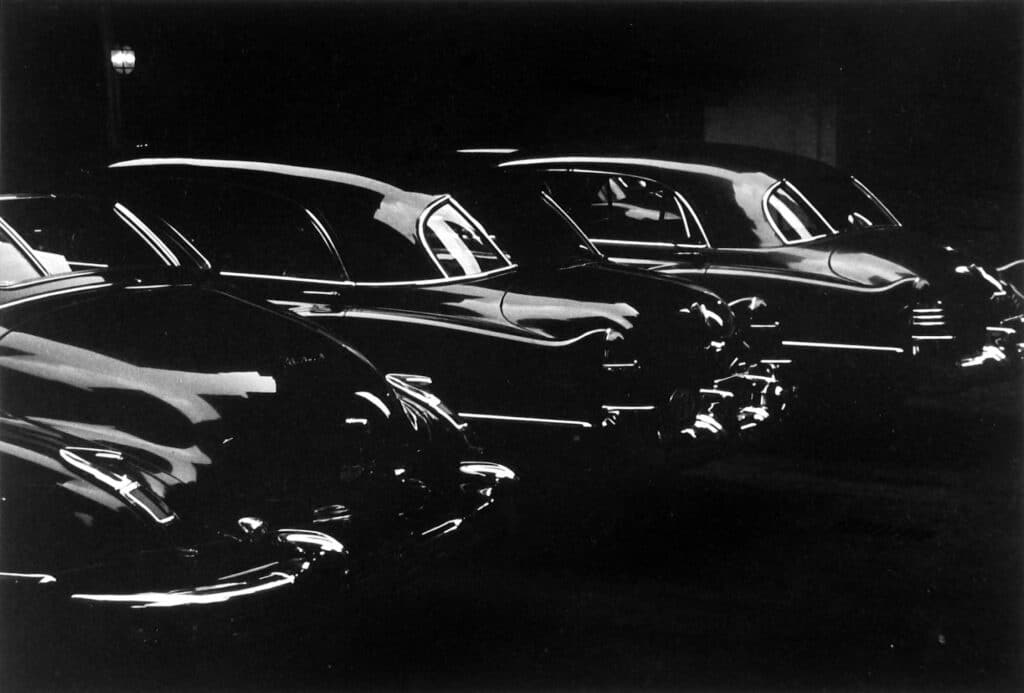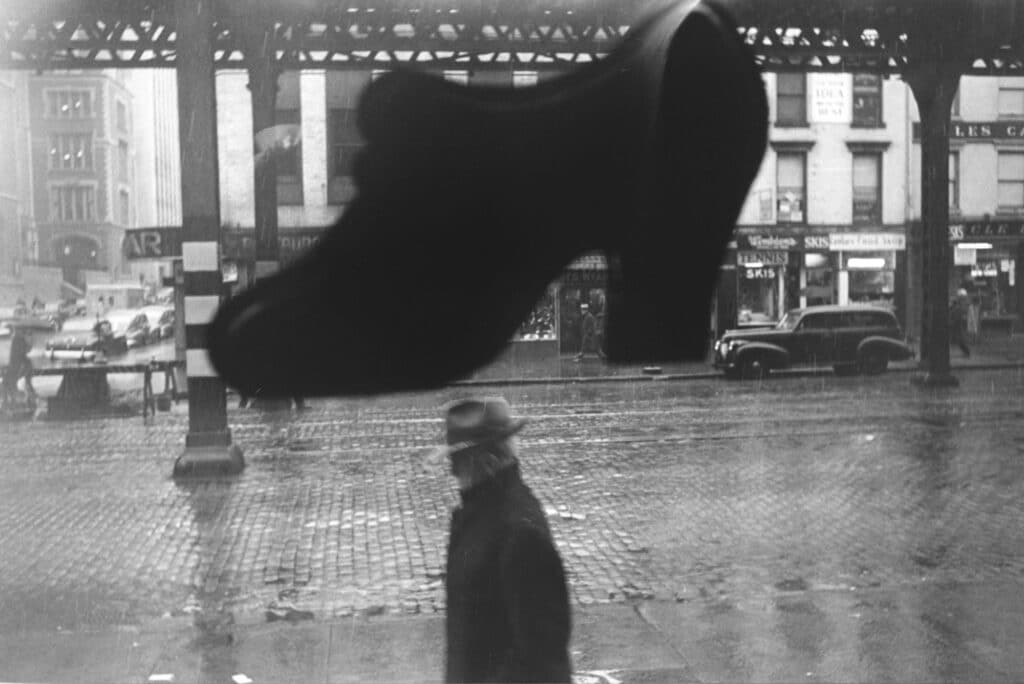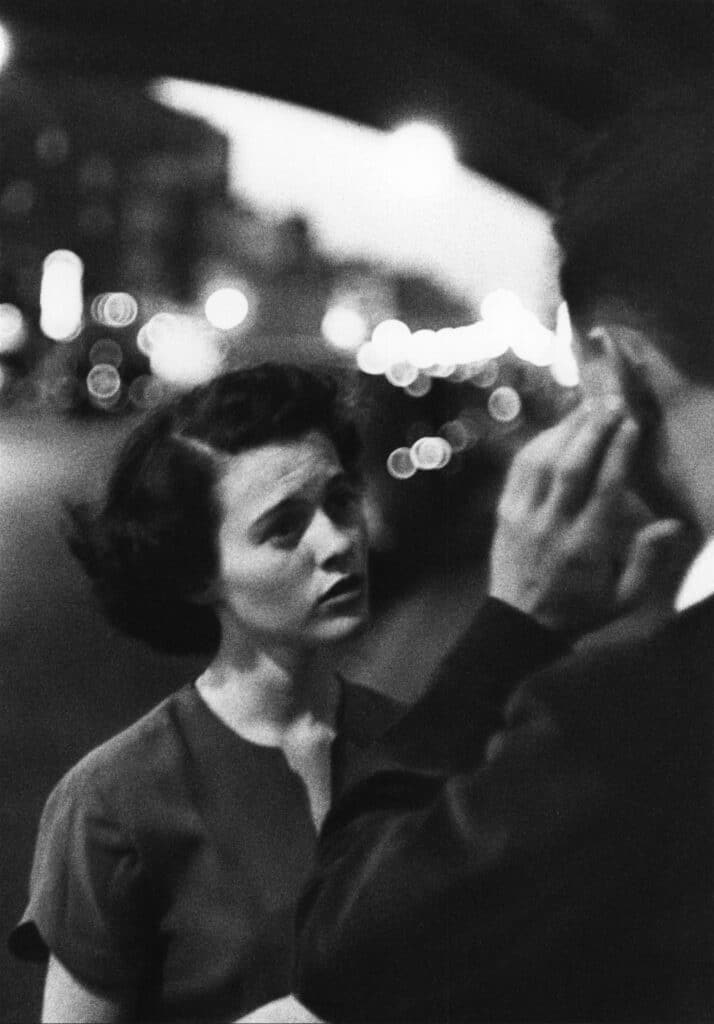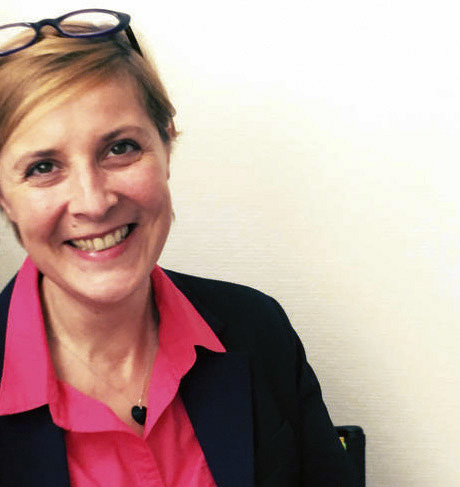Sensible and strange are among the many words that describe what made Louis Faurer’s gaze so unique. Born in 1916 in Philadelphia, he remains less known in France than Helen Levitt, Robert Frank or William Klein, who also worked in the streets. With the twenty prints presented at the Les Douches la Galerie, we get to evaluate his talent, including his words about the credibility of street photography, established as a full-fledged genre over the decades.
Louis Faurer’s encounter with New York – where he settled in 1947 – was emotionally and photographically decisive. “1946 to 1951 were important years. I photographed almost daily and the hypnotic dusk light led me to Times Square. Several nights of photographing in that area and developing and printing in Robert Frank’s dark room became a way of life. He would say, ‘Whatta town, Whatta town,’”* he recounted.
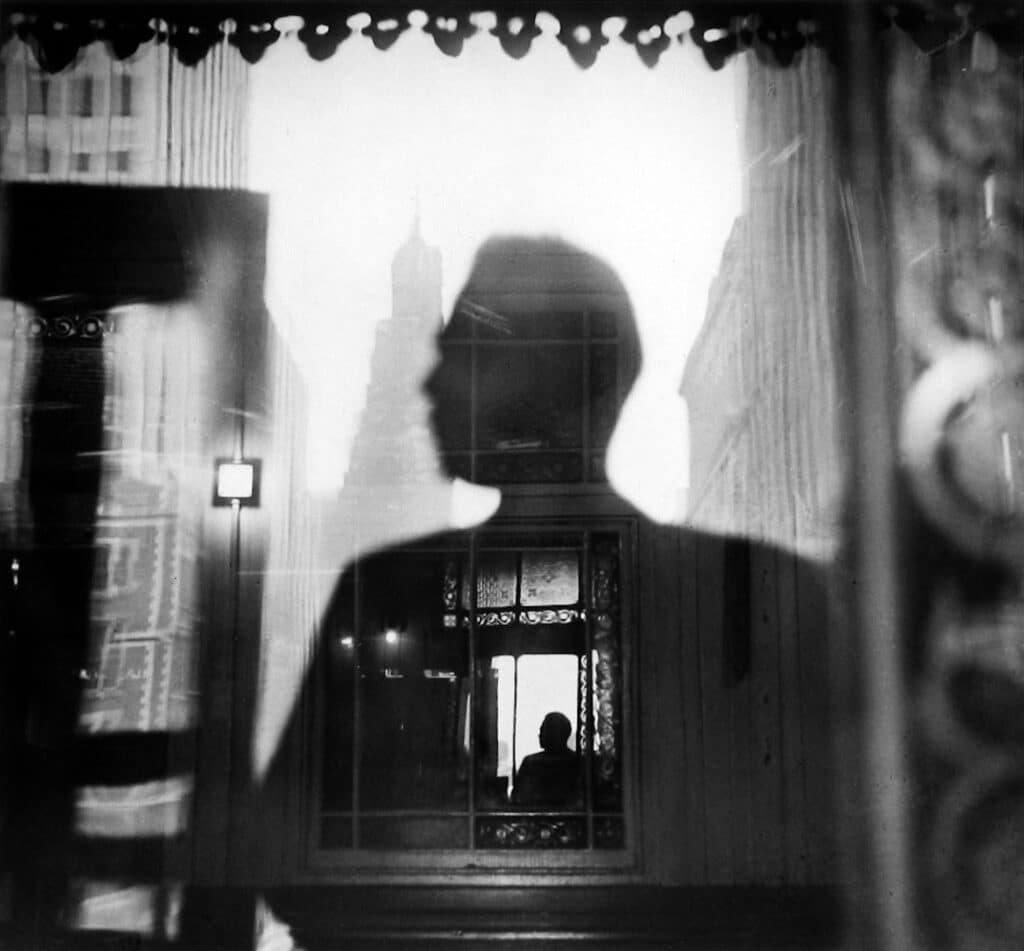
It was in New York that Louis Faurer befriended the also newly-arrived Swiss. The latter was not yet the recognized photographer we show as an example today : he started out in 1955, and his first book, “The Americans“, did not see the light of day until 1958. The two men became friends and decided to reconsider their practice, which was marginal and far from reportage at the time, to make room for subjectivity, playing on the vague and often flirting with abstraction.
It was in New York that Louis Faurer produced his greatest works, a corpus that he himself considers as personal work, free from the constraint of commissioning. He chose to preserve his freedom of creation by earning a living in fashion. Recruited by Lilian Bassman, then artistic director of Junior Bazaar, he later worked for Flair, Harper’s Bazaar, Glamour and Mademoiselle. “I tasted and accepted the offerings of the 50s and 60s. Life, Cowles Publications, Hearst and Conde Nast enabled me to continue with my personal photography efforts.”
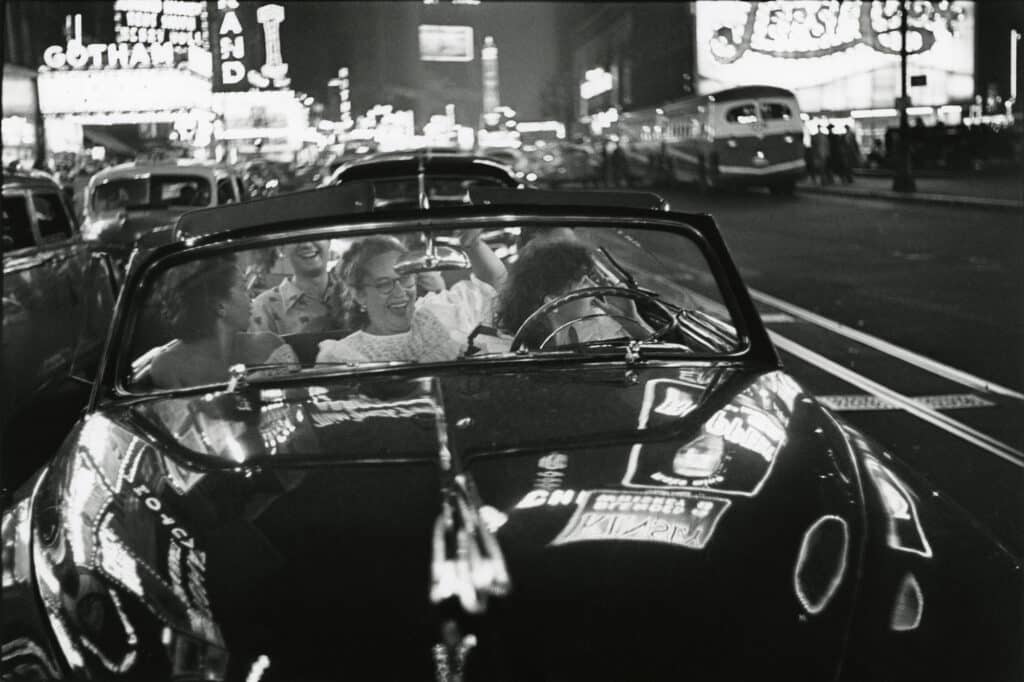
Fascinated by New York, Louis Faurer portrayed a phantasmagorical vision of the city, playing on shadows and reflections, interweaving architectures in complex compositions, often making it difficult to distinguish reality from illusion. A bold style meant to transcribe sensations and atmospheres instead of transcribing reality, and a point of view far from that of humanists marking the photography scene on the other side of the Atlantic in those years.
Much like his European contemporaries, the street was his favorite place, but unlike them, Louis Faurer did not look for anecdotes or colorful images. And while human beings are at the heart of his work, he captures the crowds pacing the streets, the smiles of a group of friends gathered in a convertible on Broadway, shadowy silhouettes of movements inscribing the letters of a cinema… Freeze-frame images of the course of life and moments in the present that escape our attention. In his own way, Louis Faurer reminds us of the value of photography and its ability to stop time and life.
His images demonstrate an America that no longer exists today, giving it an undeniable documentary value. However, they are not nostalgic but rather capture universal and timeless moments of life. Sometimes they grasp a graceful moment like the emotional look exchanged between a man and a woman. To allude to the exhibition’s title, his work is somewhat melancholic. The magic of Faurer’s images owes much to the smoky black-and-white colors and his mastery of composition. Of course, the reason is that he photographed at nightfall.
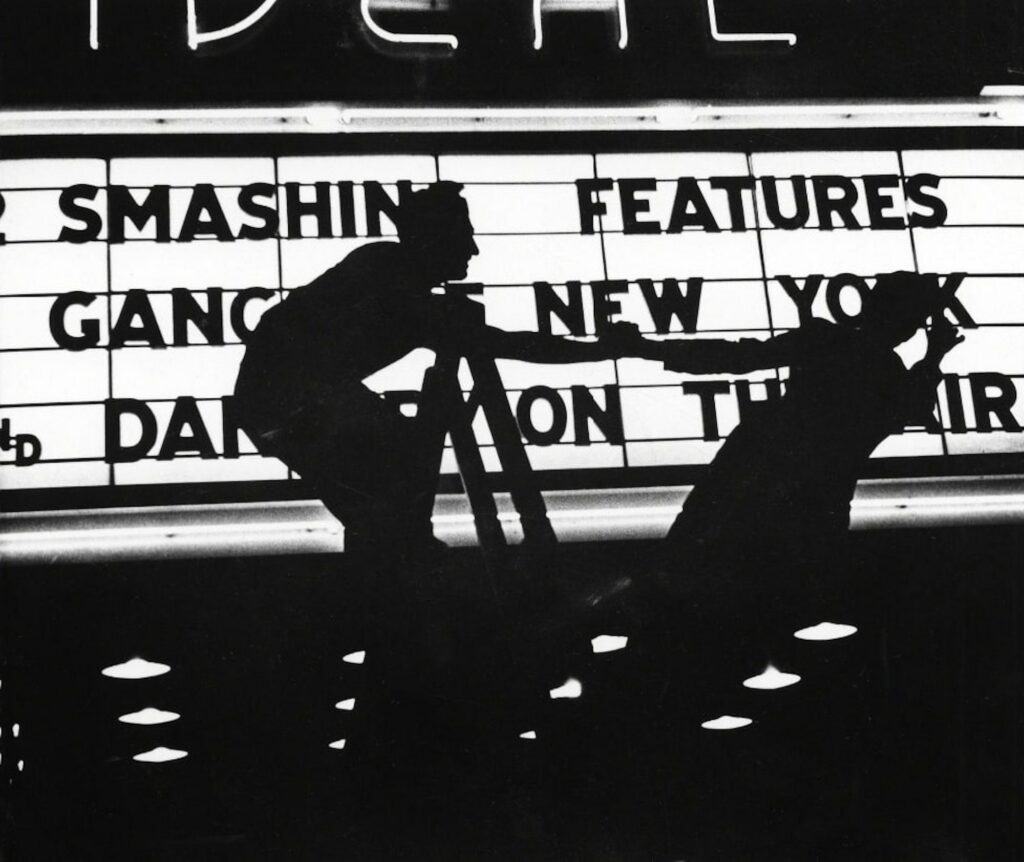
“Louis Faurer: The Melancholy Watcher”, September 8 to October 29, 2022. Les Douches la Galerie also presents an exhibition by Frank Horvat titled The Unpredictable.
*Text from the catalog published for the exhibition at the Henri Cartier-Bresson Foundation, “Louis Faurer”, Steidl editions, 2016.

